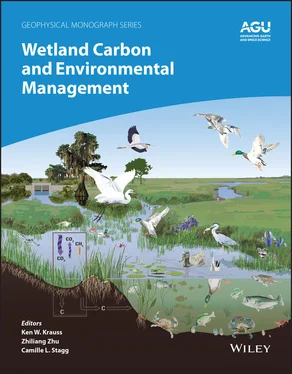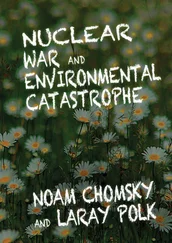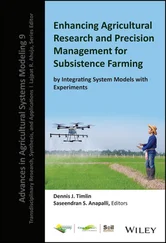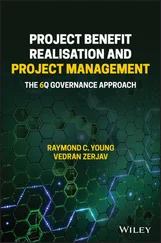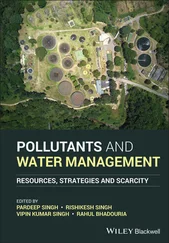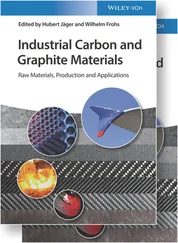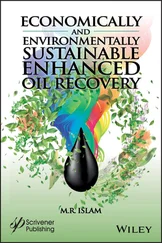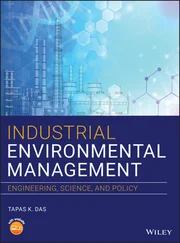370 Rudolph, H., & Samland, J. (1985). Occurrence and metabolism of sphagnum acid in the cell walls of bryophytes. Phytochemistry, 24(4), 745–749. https://doi.org/10.1016/S0031‐9422(00)84888‐8
371 Sabine, C. L., Heimann, M., Artaxo, P., Bakker, D. C. E., Chen, C.‐T. A., Field, C. B., et al. (2004). Current status and past trends of the global carbon cycle. In: C. B. Field & M. R. Raupach (Eds.), Global carbon cycle: Integrating humans, climate, and the natural world (pp. 17–44). Washington, D.C.: Island Press.
372 Sasmito, S. D., Taillardat, P., Clendenning, J. N., Cameron, C., Friess, D. A., Murdiyarso, D., & Hutley, L. B. (2019). Effect of land‐use and land‐cover change on mangrove blue carbon: A systematic review. Global Change Biology, 25, 4291–4302. https://doi.org/10.1111/gcb.14774
373 Saunois, M., Bousquet, P., Poulter, B., Peregon, A., Ciais, P., Canadell, J. G., et al. (2016). The global methane budget 2000–2012. Earth System Science Data, 8(2), 697–751. https://doi.org/10.5194/essd‐8‐697‐2016
374 Schindler, D. W., Curtis, P. J., Parker, B. R., & Stainton, M. P. (1996). Consequences of climate warming and lake acidification for UV‐B penetration in North American boreal lakes. Nature, 379(6567), 705–708. https://doi.org/10.1038/379705a0
375 Schippers, A., & Jørgensen, B. B. (2002). Biogeochemistry of pyrite and iron sulfide oxidation in marine sediments. Geochimica et Cosmochimica Acta, 66(1), 85–92.
376 Schmidt, M. W. I., Torn, M. S., Abiven, S., Dittmar, T., Guggenberger, G., Janssens, I. A., et al. (2011). Persistence of soil organic matter as an ecosystem property. Nature, 478(7367), 49–56. https://doi.org/10.1038/nature10386
377 Segarra, K. E. A., Comerford, C., Slaughter, J., & Joye, S. B. (2013). Impact of electron acceptor availability on the anaerobic oxidation of methane in coastal freshwater and brackish wetland sediments. Geochimica et Cosmochimica Acta, 115, 15–30. https://doi.org/10.1016/j.gca.2013.03.029
378 Segarra, K. E. A., Schubotz, F., Samarkin, V. A., Yoshinaga, M. Y., Hinrichs, K. U., & Joye, S. B. (2015). High rates of anaerobic methane oxidation in freshwater wetlands reduce potential atmospheric methane emissions. Nature Communications, 6(May), 1–8. https://doi.org/10.1038/ncomms8477
379 Segers, R. (1998). Methane production and methane consumption: A review of processes underlying wetland methane fluxes. Biogeochemistry, 41, 23–51. https://doi.org/10.1023/A:1005929032764
380 Selvam, B. P., Lapierre, J. F., Guillemette, F., Voigt, C., Lamprecht, R. E., Biasi, C., et al. (2017). Degradation potentials of dissolved organic carbon (DOC) from thawed permafrost peat. Scientific Reports, 7, 1–9. https://doi.org/10.1038/srep45811
381 Shibata, H., Petrone, K. C., Hinzman, L. D., & Boone, R. D. (2003). Effect of fire on dissolved organic carbon and inorganic solutes in spruce forest in the permafrost region of interior Alaska. Soil Science and Plant Nutrition, 49(1), 25–29. https://doi.org/10.1080/00380768.2003.10409975
382 Shields, M. R., Bianchi, T. S., Gélinas, Y., Allison, M. A., & Twilley, R. R. (2016). Enhanced terrestrial carbon preservation promoted by reactive iron in deltaic sediments. Geophysical Research Letters, 43, 1149–1157. https://doi.org/10.1002/2015GL067388
383 Shuttleworth, E. L., Evans, M. G., Hutchinson, S. M., & Rothwell, J. J. (2015). Peatland restoration: Controls on sediment production and reductions in carbon and pollutant export. Earth Surface Processes and Landforms, 40(4), 459–472. https://doi.org/10.1002/esp.3645
384 Silliman, B. R., Van De Koppel, J., McCoy, M. W., Diller, J., Kasozi, G. N., Earl, K., et al. (2012). Degradation and resilience in Louisiana salt marshes after the BP‐Deepwater Horizon oil spill. Proceedings of the National Academy of Sciences of the United States of America, 109(28), 11234–11239. https://doi.org/10.1073/pnas.1204922109
385 Sippo, J. Z., Maher, D. T., Tait, D. R., Holloway, C., & Santos, I. R. (2016). Are mangrove drivers or buffers of coastal acidification? Global Biogeochemical Cycles, (Dic), 753–766. https://doi.org/10.1002/2015GB005324
386 Sippo, J. Z., Maher, D. T., Schulz, K. G., Sanders, C. J., McMahon, A., Tucker, J., & Santos, I. R. (2019). Carbon outwelling across the shelf following a massive mangrove dieback in Australia: Insights from radium isotopes. Geochimica et Cosmochimica Acta, 253, 142–158. https://doi.org/10.1016/j.gca.2019.03.003
387 Skjelkvåle, B. L., Stoddard, J. L., Jeffries, D. S., Tørseth, K., Høgåsen, T., Bowman, J., et al. (2005). Regional scale evidence for improvements in surface water chemistry 1990‐2001. Environmental Pollution, 137(1), 165–176. https://doi.org/10.1016/j.envpol.2004.12.023
388 Smemo, K. A., & Yavitt, J. B. (2007). Evidence for anaerobic CH4 oxidation in freshwater peatlands. Geomicrobiology Journal, 24(7–8), 583–597. https://doi.org/10.1080/01490450701672083
389 Smemo, K. A., & Yavitt, J. B. (2011). Anaerobic oxidation of methane: an underappreciated aspect of methane cycling in peatland ecosystems? Biogeosciences, 8(5), 779–793. https://doi.org/10.5194/bgd‐7‐7945‐2010
390 Smith, D. C., Konrad, V., Koulouris, H., Hawes, E., & Borns, H. W. (1989). Salt marshes as a factor in the agricuture of northeastern North America. Agricultural History, 63(2), 270–294.
391 Smith, S. M., & Green, C. W. (2013). Sediment suspension and elevation loss triggered by Atlantic mud fiddler crab (Uca pugnax) bioturbation in salt marsh dieback areas of southern New England. Journal of Coastal Research, 31(1), 88. https://doi.org/10.2112/jcoastres‐d‐12‐00260.1
392 Smith, S. M., Newman, S., Garrett, P. B., & Leeds, J. A. (2001). Differential effects of surface and peat fire on soil constituents in a degraded wetland of the northern Florida Everglades. Journal of Environmental Quality, 30, 1998–2005. https://doi.org/10.2134/jeq2001.1998
393 Smith, T. J., & Odum, W. E. (1981). The effects of grazing by snow geese on coastal salt marshes. Ecology, 62(1), 98–106. https://doi.org/10.2307/1936673
394 Smyth, A. R., Loecke, T. D., Franz, T. E., & Burgin, A. J. (2019). Using high‐frequency soil oxygen sensors to predict greenhouse gas emissions from wetlands. Soil Biology and Biochemistry, 128(July 2018), 182–192. https://doi.org/10.1016/j.soilbio.2018.10.020
395 Song, C., Liu, D., Yang, G., Song, Y., & Mao, R. (2011). Effect of nitrogen addition on decomposition of Calamagrostis angustifolia litters from freshwater marshes of Northeast China. Ecological Engineering, 37(10), 1578–1582. https://doi.org/10.1016/j.ecoleng.2011.03.036
396 Sørensen, J., Christensen, D., & Jørgensen, B. B. (1981). Volatile fatty acids and hydrogen as substrates for sulfate‐reducing bacteria in anaerobic marine sediment. Applied and Environmental Microbiology, 42(1), 5–11. https://doi.org/10.1128/aem.42.1.5‐11.1981
397 Spivak, A. C., Sanderman, J., Bowen, J. L., Canuel, E. A., & Hopkinson, C. S. (2019). Global‐change controls on soil‐carbon accumulation and loss in coastal vegetated ecosystems. Nature Geoscience, 12(9), 685–692. https://doi.org/10.1038/s41561‐019‐0435‐2
398 Stanley, K. M., Heppell, C. M., Belyea, L. R., Baird, A. J., & Field, R. H. (2019). The importance of CH4 ebullition in floodplain fens. Journal of Geophysical Research: Biogeosciences, 124(7), 1750–1763. https://doi.org/10.1029/2018JG004902
399 Stephens, J. C., Allen Jr., L. H., & Chen, E. (1984). Organic soil subsidence. In: T. L. Holzer (Ed.), Man‐Induced Land Subsidence. Reviews in Engineering Geology Vol 6 (pp. 107–122). Boulder, Colorado: Geological Society of America.
400 Sterner, R. W., & Elser, J. J. (2002). Ecological Stoichiometry: The Biology of Elements from Molecules to the Biosphere. Princeton, New Jersey: Princeton University Press. https://doi.org/10.1515/9781400885695
Читать дальше
